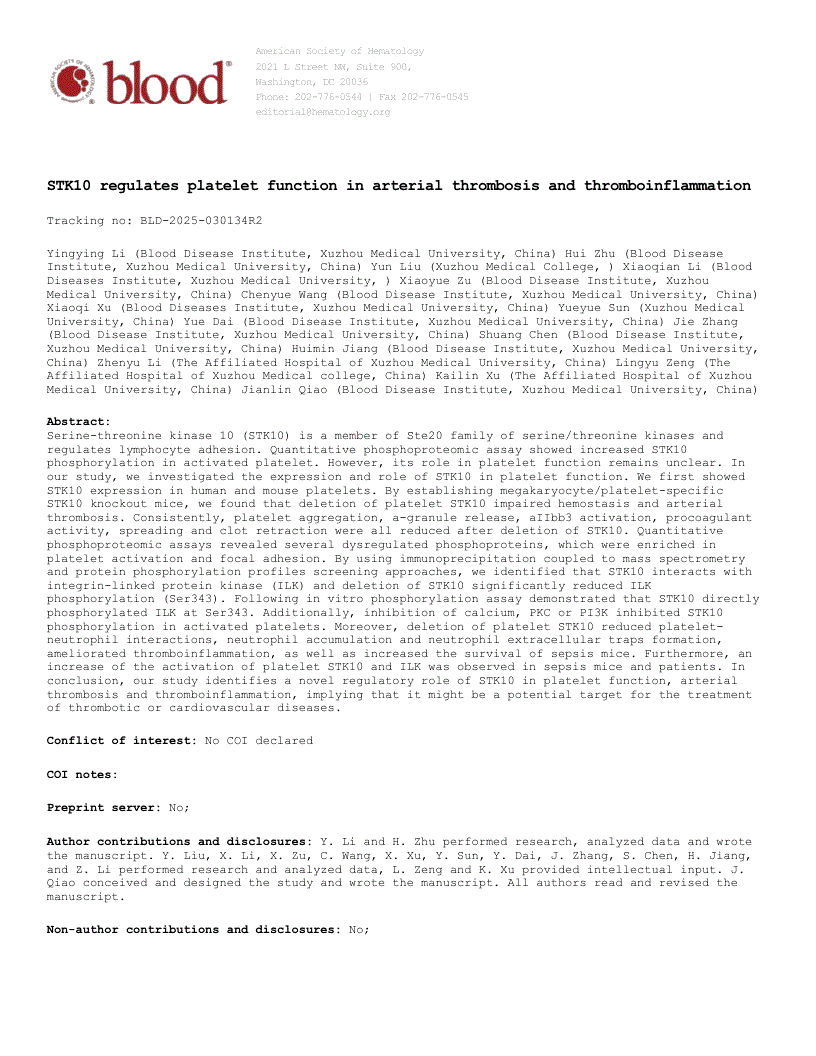Key Points
Deletion of STK10 inhibits platelet function, hemostasis, arterial thrombosis and ameliorates thromboinflammation.
STK10 interacts with ILK and phosphorylates it to regulate platelet function.
Serine-threonine kinase 10 (STK10) is a member of Ste20 family of serine/threonine kinases and regulates lymphocyte adhesion. Quantitative phosphoproteomic assay showed increased STK10 phosphorylation in activated platelet. However, its role in platelet function remains unclear. In our study, we investigated the expression and role of STK10 in platelet function. We first showed STK10 expression in human and mouse platelets. By establishing megakaryocyte/platelet-specific STK10 knockout mice, we found that deletion of platelet STK10 impaired hemostasis and arterial thrombosis. Consistently, platelet aggregation, a-granule release, aIIbb3 activation, procoagulant activity, spreading and clot retraction were all reduced after deletion of STK10. Quantitative phosphoproteomic assays revealed several dysregulated phosphoproteins, which were enriched in platelet activation and focal adhesion. By using immunoprecipitation coupled to mass spectrometry and protein phosphorylation profiles screening approaches, we identified that STK10 interacts with integrin-linked protein kinase (ILK) and deletion of STK10 significantly reduced ILK phosphorylation (Ser343). Following in vitro phosphorylation assay demonstrated that STK10 directly phosphorylated ILK at Ser343. Additionally, inhibition of calcium, PKC or PI3K inhibited STK10 phosphorylation in activated platelets. Moreover, deletion of platelet STK10 reduced platelet-neutrophil interactions, neutrophil accumulation and neutrophil extracellular traps formation, ameliorated thromboinflammation, as well as increased the survival of sepsis mice. Furthermore, an increase of the activation of platelet STK10 and ILK was observed in sepsis mice and patients. In conclusion, our study identifies a novel regulatory role of STK10 in platelet function, arterial thrombosis and thromboinflammation, implying that it might be a potential target for the treatment of thrombotic or cardiovascular diseases.


This feature is available to Subscribers Only
Sign In or Create an Account Close Modal